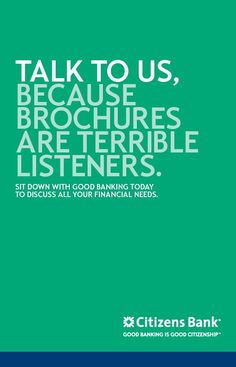
Cost-per-click (CPC) advertising has become a popular way to promote websites, since they work well for both publishers and advertisers. Publishers earn money for directing potential customers to the ads. Advertisers use this traffic to make sales. Cost-per-click ads are sold through advertising programs like Google AdSense, which makes your website available to the huge network of advertisers and publishers. However, this type of advertising isn't appropriate for every website. You should first know who your audience is before placing ads on their website.
Contextual ads
Contextual advertisements on websites are an online form of advertising that is displayed on websites in order to match the pages' content. A website that lists real estate agents may show real-estate-related ads. Depending on what keyword phrase you used in your ad the ad might appear on your site or on other sites your audience visits. If you do not want to use Google's ad service, you can try Yahoo Publisher.

Interstitial ads
It is possible to make interstitial ads less frequent and smaller on your website. This will increase its performance. These ads are generally too distracting to the user experience. Interstitials that are too numerous can cause page load times to slow down, which can be detrimental. A small ad should not appear on a page more than a few seconds before it breaks. This depends on the context.
Rich media ads
One of the main considerations when marketing is discussed is how to attract the audience's attention. Rich media ads are a great way of achieving this. They enhance the user's experience and encourage retention. These ads are ideal for attracting people because they make it easier for them to understand information. Rich media ads appear to have a higher click rate than other types.
Cost-per-mille
CPM (cost-per-mille) is an advertising measure that measures the effectiveness of a marketing budget. It describes how much an advertiser charges for every 1,000 impressions of an advert. It is applicable to display ads on websites. But mobile devices are more commonly used than desktops. The cost-per mille of ads placed on websites varies depending upon the website's niche or the geographic location.

Cost-per-action
Advertisers can pay for specific actions on their websites using the cost-per-action (CPA), method of advertising. This model allows marketers to set up a budget that they can spend in a way that maximizes the return on their investment. In some cases, this method is also called "recommendation model" advertising. This model allows advertisers to charge for every action, such as clicking on an ad or submitting their contact details, which they determine is a conversion. The resultant cost-per action model allows marketing teams control costs and optimize their ROI.
FAQ
What is an advertisement buyer?
An advertiser buys advertising space on TV, radio, print media, etc.
Advertisers pay for the time their message appears.
They are not necessarily looking for the best ad but rather what is most effective at reaching their target market.
Advertisers may have demographic information such as the age, gender, marital status, income level, occupation, hobbies, and interests of their customers.
Advertisers can use these data to determine the best medium for them. They may decide that direct mail works better with older people.
Advertisers also consider the competition. If there are similar businesses nearby, they might choose to place their ads near those competitors.
Advertisers should also consider how much money they have available and how long it takes to use it.
What is advertising's main purpose?
Advertising isn’t about selling products.
Advertising is about communicating your ideas and values to people who already care about what you have to say. Advertising is about changing people's minds and attitudes. It's all about building relationships.
It's all a matter of making people feel good.
If you don't understand your customers' needs, you can't market to them.
So before you start any advertising project, you should first understand your customer's needs and wants, and buying habits.
Then, you can create ads that resonate.
What do you need to know about television advertising?
Television advertising is an extremely effective medium for reaching many people at once. It was also expensive. However, it can be powerful if you use the device correctly.
While there are many types and styles of TV ads, most share some common traits. The first thing to remember when planning any type of TV ad is to ensure it fits into its category. Don't confuse a lifestyle ad with a product advertisement if you are running a commercial. Your message should stay consistent throughout the campaign.
A second important thing to keep in mind is that prime-time hours is the best time to air ads. This is because most viewers watch TV while relaxing in front of the set. You want them to be comfortable enough to listen to your words.
You don't have to be rich to achieve great results. It may be the reverse. A University of California study found that commercials broadcast during popular shows had a lower chance of selling products than those broadcast during less-popular shows. You should ensure that you spend your money wisely if you plan to advertise on television.
What is the best way to advertise in print?
Print advertising is an effective medium for communicating with consumers. Print advertising is used by many companies to promote their products and services. The main goal is to catch the attention and buy from the consumer.
Print ads are typically short (1 page) and usually include text, photos, logos, or other graphics. These ads may include sound, animation and video as well as hyperlinks.
The following categories are the most common types of print advertisements:
1. Brochures - Large format printed brochures are used to draw people in to stores. They often have colorful pictures and eye-catching designs.
2. Catalogues - These are smaller versions of brochures. These are often sent to customers who have asked for information on particular items.
3. Flyers – These are small pieces made of paper that are distributed at events, such as fairs or concerts. Flyers can be handed out at retail outlets for a small fee, but are generally free.
4. Posters - These flyers can be larger than the ones you see on the flyer. They are displayed on walls, fences, and buildings. They are usually made using computer software programs, which is designed to draw the eye of passersby.
5. Direct mail – These are direct mail letters and postcards sent to potential customers. These are sent periodically by companies to remind current customers about their business.
6. Newspaper Ads - These are placed in newspapers and magazines. These are typically quite long and often contain text as well images.
What is an advertising campaign?
Advertising campaign refers to a series of advertisements intended to promote a product. It may also refer to the entire production of such ads.
The Latin word for selling is "ad." Marcus Terentius Varro (116–27 BC), the first known user of the term "ad" used it to mean "to make sales."
Advertising campaigns are typically done by large agencies and companies. Many media types can be used in these campaigns, including television, radio and print.
Advertising campaigns are typically long-lasting and have clear goals. Some campaigns are designed to increase awareness, while others aim to increase sales.
Social media is a great way to advertise your business.
Social Media Marketing, or SMM, allows you access customers directly on social networks, such as Facebook, Twitter LinkedIn YouTube YouTube Google+. You can also target specific audiences within these networks by using keywords.
This advertising method is cost-effective because it costs less to market online than traditional methods. It allows you build strong relationships between your potential and existing clients.
It's simple to begin using social media to promote a business. You only need a smartphone or computer and internet access.
Advertising: What is it?
Advertising is an artistic art form. It's more than just selling products. It's about building emotional connections between brands and people.
Advertising is about telling stories and using images to communicate ideas.
Communication must be clear and persuasive. You must tell a story that is relatable to your target market.
Advertising is thus different from other forms, such public speaking, writing, and presentations.
When you create a winning ad campaign, it is creating your brand identity.
This is how you are memorable. You become someone that people remember.
Statistics
- Nonetheless, advertising spending as a share of GDP was slightly lower – about 2.4 percent. (en.wikipedia.org)
- It collects money from the advertisers, keeps 32% for its role in facilitating the process, and the remaining 68% goes to the publisher (you). (quicksprout.com)
- Google will display whichever ad type (CPM or CPC) is expected to earn more revenue for the publisher, which is in Google's best interest since they take a 32% share of the revenue. (quicksprout.com)
- Worldwide spending on advertising in 2015 amounted to an estimated US$529.43 billion. (en.wikipedia.org)
External Links
How To
How do I advertise on Google?
AdWords allows companies to purchase ads based on specific keywords. Set up your account first. You select a campaign name, set the budget, choose the ad type (text, image, video), and add keywords. You then bid on these keywords. Clicking on an advertisement will only result in you being paid if the click is from someone who searched one of your targeted keyword phrases. You can get paid even though people don’t buy any products.
Google has many tools to help you ensure your ads work. They include Keyword Planner, Ads Preferences Manager, and Analytics. These allow you to see what works best for your business.
A keyword planner allows you to determine the best keywords to use in your campaigns. You can also see how competitive certain keywords are, which will help you decide whether to spend money bidding for them.
You can use Ads Preferences Manager to change settings like the maximum number of impressions per day and the minimum cost per click.
Analytics allows you to monitor the performance and compare your ads to other competitors. You can also view reports that show how well your ads compared to others.